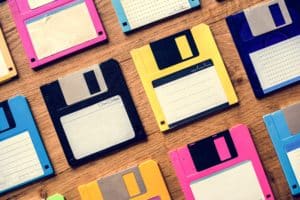There was a decent amount of time where if it seemed if you added the word quantum to the title of a book or TV series, it almost gave an added sense of fantasy to the equation. Afterall, would Quantum Leap have been more successful if it were called Time Leap or Look at Scott Bakula Go? Maybe, but we would be lying if we said we didn’t think Quantum Leap has a lot better ring to it.
Today, when we talk about the word quantum there is a good chance, we are talking in relation to the advancements in quantum computing. IBM’s chandelier-like quantum computer, first unveiled at CES in 2019 quickly comes to mind.
This marks a key turning point in our relationship with technology. Not only does this mean we are moving beyond the binary constrictions of 1s and 0s but also could be the answer to a lot of challenges in both life and business. As per IBM ‘Quantum computing is poised to expand the scope and complexity of business problems we can solve.’
Let’s look at a few ways technology has developed over time and how it helped to create the tech powerhouses we know today.

Textile Efficiency
We are always looking for ways to do something better or more efficiently. In fact, one of the earliest forms of computing comes in the form of programmable loom called the ‘Jacquard Loom’. This introduced a punch-card like system to creating certain textiles.
The invention was so impressive that Napoleon himself visited to see Jacquard’s machine in action. He was purportedly so impressed that within days, he had granted Jacquard the patent for the loom.
Counting the hard way
Following the 1880 census, government officials were starting to realize they were collecting more response than they could calculate. In 1888, they held a competition to challenge inventive individuals to find a more efficient method of tabulation. Three different people rose to the challenge.
The winner, Herman Hollerith, was able to process the data using his punch card system in almost half the time of his opponents. He therefore won the contract with the US Census Bureau. Upgraded versions of this technology would be used for census and other collection purposes up until the 1950s.
Hollerith went on to found the Computing-Tabulating-Recording company. He continued to be successful in his endeavors. In 1924 the company was renamed as the tech giant we are very familiar with today International Business Machines or IBM.
A quick journey through the evolution of computing devices
Once the technology bug arrived, invention quickly spread across the globe.
In 1936 we see one of the first analog computers, the Turing machine, invented by Alan Turing. A short year later, John Vincent Atanasoff submitted a proposal for the first computer without gears, shafts, cams, or belts. His invention was completed along with graduate student Clifford berry in 1941. The model was called the Atanasoff Berry Computer, or ABC for short.
1958 saw the invention of the ‘integrated circuit’ or what is commonly known now as the computer chip. As we already know, these chips are integral part of today’s technology. You may recall how semi-recently, a shortage in chips took quite a toll on the supply chain.

No, it's not the 'save' icon 3D printed
All the numerous jokes about floppy disks aside, this was an extremely important step in advancing society. Today many of us are guilty taking easy information transfer for granted. We’re used to break-neck speeds and when our system sharing devices don’t hold up, it can be extremely frustrating.
With the advent of transferable information via floppy disk, a lot of business and personal information problems were solved.
One of the next big inventions comes at the hands of Jobs and Wozniak in 1976. In April of that year, they unveiled the first version of a single-circuit computer, called the Apple I computer. Less than a decade later, the Apple Macintosh is announced during the Super Bowl.
Today
Every part of this technological journey has been integral to reach where we are today.
Multiple ideas, devices, successes, and failures come together to help make our lives easier. Whether it be our personal lives or that of business.
Vodigy Technologies is here to help. Not only do we have a deep understanding of SMB technology infrastructure, but we strive to be your dedicated partner in all things IT.




